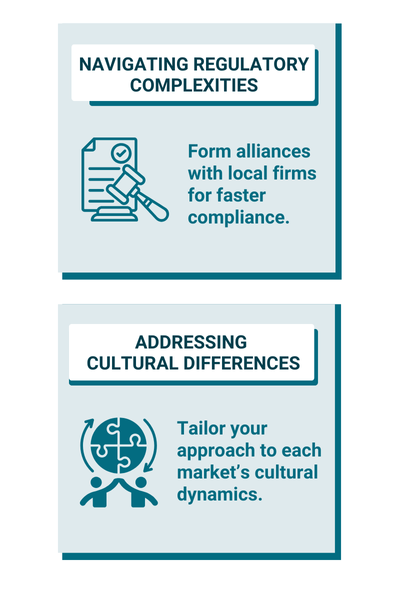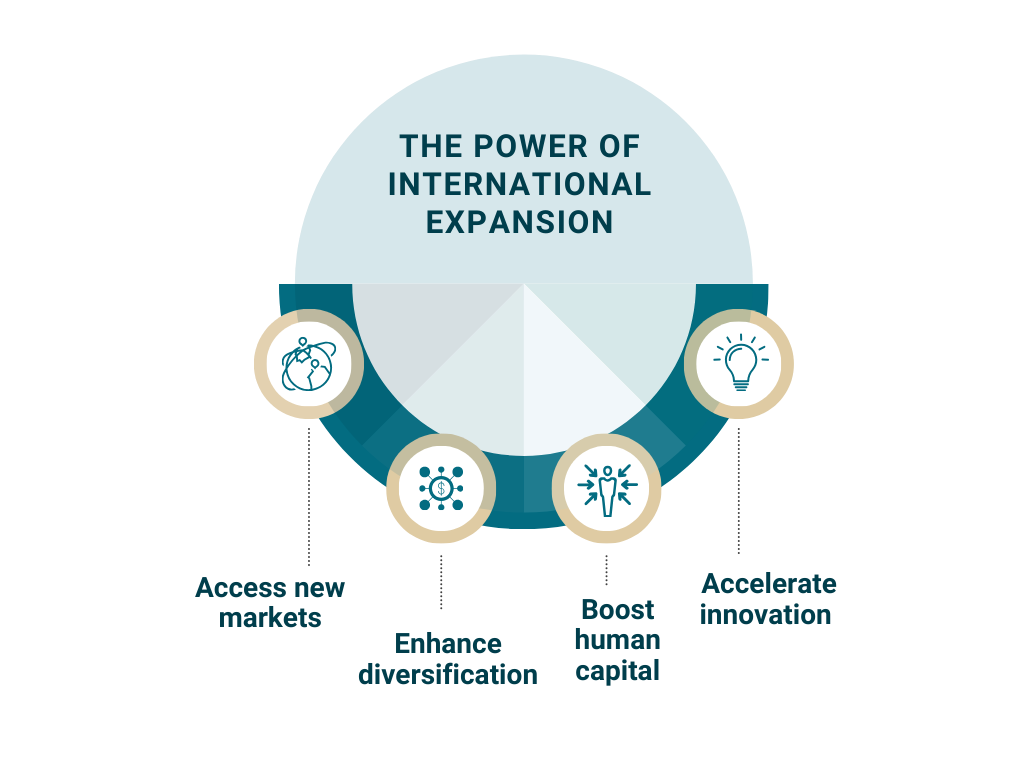Strategic Internationalization: Navigating Benefits and Challenges
Internationalization represents a pivotal strategy for companies aiming to access new markets, enhance diversification, enrich human capital, accelerate innovation, and extend brand presence beyond domestic borders. Despite its clear advantages, this process is accompanied by a range of challenges and obstacles that demand expert guidance for successful execution.
Internationalization initiatives are inherently unique, shaped by various factors including company characteristics, industry sector, and geographical considerations. However, certain overarching strategies can aid in smoother market entry. Drawing on INVERLINK – IMAP Colombia's extensive experience — over 38 years of providing financial and investment advisory services and successfully completing more than 250 transactions across diverse sectors and countries in the Latin American region — we outline five key challenges of internationalization and offer strategic recommendations for addressing them.

1. Navigating Regulatory Complexities:
Each country operates under distinct regulatory frameworks that must be thoroughly understood prior to market entry. Beyond familiarizing oneself with regulatory requirements, it is essential to grasp local nuances to ensure a seamless entry and adherence to timelines. Forming alliances with local firms can streamline regulatory compliance and expedite market entry, offering insights into practical regulatory realities beyond formal guidelines.
2. Addressing Cultural Differences:
Investing in cultural intelligence training is crucial for enhancing communication and understanding in international markets. Neglecting this aspect can result in persistent challenges and delays. Gaining insight into the cultural dynamics of each market is essential for successful integration. For example, understanding the differences in business cultures between Brazil and Mexico can significantly impact the success of operations in these regions. Something to consider when entering a new market is whether to have a local partner that brings the local know-how and know who which reduces the execution risk. This is especially relevant when you are beginning operations in said market; as opposed to expanding from a commercial operation (i.e. exports) to a more holistic manufacturing, marketing and distribution model.
3. Optimizing Expansion Costs:
Achieving success in internationalization involves adhering to established timelines and budgets. Detailed financial planning and comprehensive market analysis are critical for optimizing resource allocation and ensuring a favorable return on investment. Such strategic planning should be embedded as a core business practice, providing valuable benefits beyond market entry.

4. Differentiating in Competitive Markets:
Entering new markets often means confronting established competitors who possess local expertise and recognition. Developing distinctive value propositions tailored to the local market is vital for customer retention. It is not sufficient merely to enter a new market; companies must offer compelling and innovative propositions that resonate with local consumers.

5. Hiring Expert Advisors:
Engaging expert advisors, such as investment bankers or consultants, can be instrumental in reducing risks and avoiding frustration from incomplete transactions. These professionals bring valuable insights and experience, helping to navigate complex international markets and ensuring smoother transactions.
Executing a successful internationalization strategy demands a blend of experience and expertise to mitigate risks and ensure that market entry decisions are sound. With its profound expertise and proven track record, INVERLINK is well-positioned to assist companies in crafting strategies that enable them to adapt and excel in the global arena, thereby enhancing their competitive edge and long-term sustainability.
